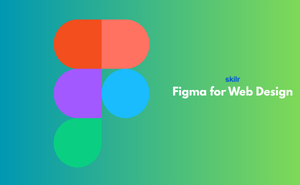👇 CELEBRATE CLOUD SECURITY DAY 👇
00
HOURS
00
MINUTES
00
SECONDS

Figma for Web Design is a modern cloud-based design platform that helps individuals and teams build website layouts and prototypes. Since it runs in the browser, designers can access their projects anytime and collaborate with others easily. With built-in tools for creating wireframes, mockups, and interactive prototypes, Figma streamlines the entire web design process.
The biggest advantage of Figma is its collaborative nature. Multiple people can work on the same file at once, similar to how teams work together on Google Docs. This reduces delays, improves communication, and makes web design more efficient and creative, especially for distributed teams.
Who should take the Exam?
This exam is ideal for:
Domain 1 - Introduction to Figma
Domain 2 - Getting Started with Figma
Domain 3 - Designing Web Layouts
Domain 4 - Prototyping in Figma
Domain 5 - Collaboration in Figma
Domain 6 - Advanced Features
Domain 7 - Handoff to Developers
Domain 8 - Future of Figma in Web Design
Industry-endorsed certificates to strengthen your career profile.
Start learning immediately with digital materials, no delays.
Practice until you’re fully confident, at no additional charge.
Study anytime, anywhere, on laptop, tablet, or smartphone.
Courses and practice exams developed by qualified professionals.
Support available round the clock whenever you need help.
Easy-to-follow content with practice exams and assessments.
Join a global community of professionals advancing their skills.
It allows real-time collaboration, feedback, and version control.
Tech, e-commerce, startups, agencies, and any company building digital products.
Yes, you can export in formats like PNG, JPG, SVG, and PDF.
Absolutely—Figma is one of the most in-demand skills in web and UI/UX design.
It’s used to design website layouts, prototypes, and user interfaces collaboratively.
No, it works directly in your browser, though there’s also a desktop app.
No, it’s a design tool. Developers can later implement your designs into code.
Yes, it has a simple learning curve and lots of tutorials.
Websites, mobile apps, dashboards, landing pages, and more.
They’re add-ons that extend Figma’s functionality, like icons, stock photos, or charts.